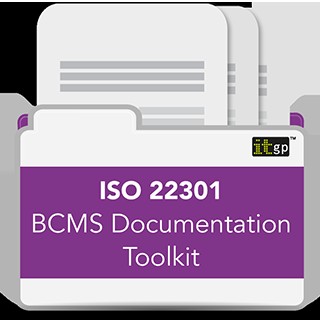Business Continuity Management (BCM) is crucial in today’s interconnected world. Bcm It, specifically, focuses on ensuring the resilience of your organization’s IT infrastructure and systems in the face of disruptions. This article will explore the key aspects of BCM IT, its importance, and how it helps organizations mitigate risks and maintain operations.
A comprehensive guide to Business Continuity Management and ISO 22301.
Why is BCM IT Important?
BCM IT is vital for several reasons:
- Minimizing Downtime: IT systems are the backbone of most modern businesses. BCM IT helps minimize downtime by identifying potential threats and developing strategies to prevent or mitigate their impact. This ensures critical operations continue functioning, even during disruptions.
- Data Protection: Data loss can be catastrophic. BCM IT prioritizes data protection through robust backup and recovery plans, safeguarding valuable information from loss or corruption.
- Regulatory Compliance: Many industries have stringent regulations regarding data security and business continuity. A strong BCM IT program helps organizations meet these requirements, avoiding penalties and legal issues.
- Reputation Management: A major IT outage can severely damage an organization’s reputation. BCM IT helps maintain customer trust and confidence by demonstrating a commitment to operational resilience.
- Financial Stability: Downtime translates to lost revenue. BCM IT protects an organization’s financial stability by ensuring business operations can continue generating income, even during disruptions.
Key Components of BCM IT
A successful BCM IT program incorporates several crucial elements:
Risk Assessment and Business Impact Analysis (BIA)
Identifying potential threats and vulnerabilities is the foundation of BCM IT. This involves conducting a thorough risk assessment and BIA to understand the potential impact of various disruptions on IT systems and business operations.
Business Continuity Plan (BCP) Development
A comprehensive BCP outlines the procedures and strategies for maintaining or restoring critical IT services during a disruption. This plan should include detailed steps for data backup and recovery, system failover, and communication protocols.
Disaster Recovery Planning
Disaster recovery planning focuses on restoring IT infrastructure and systems after a major incident. This includes establishing off-site data centers, implementing failover mechanisms, and conducting regular disaster recovery drills.
Implementing BCM IT: Best Practices
- Align with ISO 22301: The international standard for business continuity management provides a framework for implementing a robust BCM program, including IT resilience.
- Regular Testing and Exercises: Regularly test and exercise the BCP and disaster recovery plan to ensure their effectiveness and identify areas for improvement. This includes tabletop exercises, simulations, and full-scale drills.
- Employee Training and Awareness: Educate employees on their roles and responsibilities during a disruption. This ensures a coordinated and effective response.
- Continuous Improvement: BCM IT is an ongoing process. Regularly review and update the BCM program to address evolving threats and vulnerabilities.
BCM IT and the NIST Cybersecurity Framework
The NIST Cybersecurity Framework provides guidance for organizations to manage and reduce cybersecurity risk. BCM IT aligns with the framework’s five core functions: Identify, Protect, Detect, Respond, and Recover, strengthening an organization’s overall cybersecurity posture.
The Role of ISO 22301 in BCM IT
ISO 22301 provides a comprehensive framework for implementing and maintaining a robust BCMS, including the IT aspects. Certification to ISO 22301 demonstrates a commitment to business continuity and can enhance an organization’s reputation and competitiveness.
Conclusion
BCM IT is an essential investment for any organization that relies on technology. By proactively planning for disruptions and implementing robust recovery strategies, organizations can minimize downtime, protect data, maintain operations, and ensure long-term success. A well-defined BCM IT program, aligned with industry best practices and standards like ISO 22301, is crucial for navigating the challenges of the digital age and ensuring organizational resilience.


